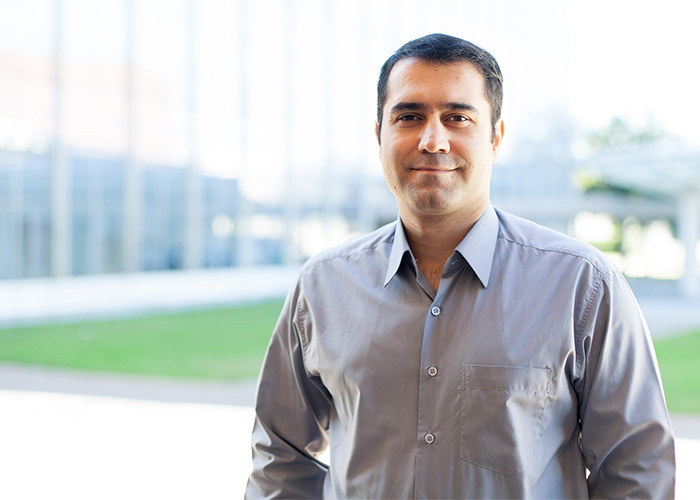Calculating Impact of Wildfires on Human Health
Impact Varies According to Intensity and Duration of Wildfire
Wildfire smoke contains a mixture of fine particulate matter and different gases, which are known to cause a host of different health issues ranging from respiratory irritation, chronic heart and lung disease, and premature death.
 Ebrahim Eslami, who studies the impact of biomass burning on human health, is a Ph.D.
student in the Department of Earth and Atmospheric Sciences.Ebrahim Eslami, a Ph.D. student in the Department of Earth and Atmospheric Sciences,
is analyzing the impact of wildfires on human health, using a tool created by the
Environmental Protection Agency, called the Environmental Benefits Mapping and Analysis
Program – Community Edition, or BENMAP-CE for short. BENMAP-CE is an open source program
that incorporates results from numerous studies conducted within the U.S., and can
be used to estimate the health impacts and economic value of changes in air quality.
Ebrahim Eslami, who studies the impact of biomass burning on human health, is a Ph.D.
student in the Department of Earth and Atmospheric Sciences.Ebrahim Eslami, a Ph.D. student in the Department of Earth and Atmospheric Sciences,
is analyzing the impact of wildfires on human health, using a tool created by the
Environmental Protection Agency, called the Environmental Benefits Mapping and Analysis
Program – Community Edition, or BENMAP-CE for short. BENMAP-CE is an open source program
that incorporates results from numerous studies conducted within the U.S., and can
be used to estimate the health impacts and economic value of changes in air quality.
Eslami, who is advised by Yunsoo Choi, an assistant professor in the College of Natural Sciences and Mathematics, examined the economic impact of wildfires in the U.S. between the years 2011-2014. Using BENMAP-CE, he calculated the total number of hospital admissions, emergency room admissions, and deaths during that span of time attributable to wildfires.
“Based on the area of the burn, and the intensity of the wildfire, you can categorize the wildfire,” Eslami said. “There is a difference between one huge fire that burns for one week, versus a lot of medium fires that burn for two months.”
Eslami found the impact in terms of premature deaths, ER visits and hospital admissions to be higher in 2011 and 2012. According to his calculations, in 2011, there were almost 5,000 premature deaths attributable to the air pollution impacts of biomass burning, with an estimated economic cost of about $50 billion dollars. With 2011 being a year of record-breaking wildfires across the U.S., this was most likely due to the increased length of exposure.
“Based on these categories, we can come up with an estimate of the health impact,” Eslami said.
Eslami presented these results at the American Geophysical Union’s Fall 2017 Meeting in New Orleans, Louisiana, during which he gave a talk, served on a conference panel, and appeared in a press conference.
- Rachel Fairbank, College of Natural Sciences and Mathematics
December 20, 2017